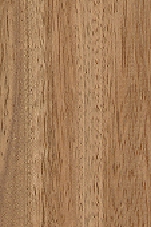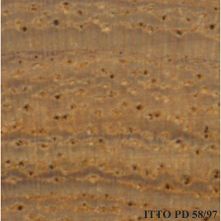
TERMINALIA (Terminalia catappa)
Trade Name
Terminalia
Scientific Name
Terminalia catappa L.
Family
COMBRETACEAE
Common Names
Vedam; Vathakottai; Thalli thenga; Tercat; Taree; Talisi; Talihai; Taisai; Savidug; Sanideng; Salisai; Salaisai; Saket; Patti badam; Natvodam; Natto-vudumay; Natavadom; Nat vadom; Nat badam; Magtalisai; Logo; Kottamba; Kotamba; Jangli badam; Indian almond wood; Hindi badam; Deshi badam; Dao; Dalisai; Catappa; Castana; Bulao; Bengali badam; Bengal almond; Bastard almond; Bangla badam; Badami; Badambo; Badam; Amendoeira; Amandier; Amanda; Almond tree; Almond; Almendro; Alita; Al-calessi; Adamarram; Talisai (Philippines); Indian almond (India); Talisai (Sabah); Bang (Vietnam); Badamier (France); Ketapang (Indonesia); Jelawai ketapang (Malaysia); Dalinsi (Philippines); Hukwang (Thailand); Badan (Myanmar); Hou kouang (Laos); Somz moox dong (Laos); Hu kwang (Laos); Pareang prang (Cambodia); Telisai (Brunei Darussalam); Chambak barang (Cambodia); Almendras (Philippines); Reddish-brown terminalia (Papua New Guinea); Telisai (Sarawak); Telisai (Sabah); Kapang (Cambodia)
Scientific Name Synonyms
Terminalia rubrigemnis Tul; Terminalia badamia sensu Tul; Catappa domestica Rumph.
Description Of The Tree
Botanical Description
It is a medium-sized evergreen or briefly deciduous tree up to 25 m tall. The bole is up to 150 cm in diameter, often with buttresses up to 3 m high. The kernels of the nut are edible.
Natural Habitat
Terminalia catappa is reported along sandy or rocky beaches, or on tidal river banks.
Natural Distribution
It spread in the Indo-Malayan region, extending to northern Australia, common in coastal areas.
Plantations Available?
It is widely planted as an ornamental throughout the tropics, often becoming naturalized.
Non Timber Uses
The high tannin content causes the wood to stain when in contact with iron elements.
Wood Identification
Anatomic Description Of Wood
Tangential diameter of vessel lumina 200 micras or more (large). Occasionally tyloses common. Vestured pits. Simple perforation plates. Vessel-ray pits similar to intervessel pits in size and shape. Intervessel pits medium, 7 to 10 micras. Axial parenchyma in marginal or in seemingly marginal bands. Axial parenchyma bands more than 3 cells wide. 4 to 10 rays per mm (medium). Rays of two distinct sizes. Ray height more than 1 mm. Body ray cells procumbent with mostly 2 to 4 rows of upright and/or square marginal cells (Kribs-II). Fibers with simple to minutely bordered pits.
-
 Wood Macro Photo Tangential Plane
Wood Macro Photo Tangential Plane
-
 Wood Micro Photo Of Transversal Section
Wood Micro Photo Of Transversal Section
Availability
Cites Status
Unrestricted
General Wood Description
Odor
It has no taste or odor.
Color
The sapwood is usually poorly defined, lighter than heartwood, which is brown to red-brown, darkening on exposure.
COLOR INDEX (1=Black, 7=Light yellow,white)
4
Grain
The grain is crossed and deeply interlocked.
Texture
This species is reported to have a medium to coarse texture.
Luster
The wood surface is described as moderate in luster.
Natural Durability
It is liable to attack by termites and marine borers.
Natural durability index (1= Very high durability, 7=Vey low durability)
5
Silica Content
Silica Content: It is non-siliceous. Silica Value: 0
Resistance To Impregnation
The heartwood is reported to be moderately resistant to impregnation but the sapwood is treatable.
Wood Physical Properties
Basic Density or Specific Gravity (O.D. weight/vol. green) (g/cm³)
0.54
Air-dry Density (Weight and volume at 12%MC) (g/cm³)
0.59
Total shrinkage Tangential (Saturated to 0%MC) (%)
5.7
Total shrinkage Radial (Saturated to 0%MC) (%)
4.5
Drying Defects
Ease of Drying: Drying is moderately difficult to difficult; special care is systematically needed. Drying Defects: Risks of casehardening and checks Kiln Schedules: Schedule proposed as a reference by comparison with well known species taking into account to the general technological behavior of this species.
Recommended Dry Kiln Schedule
JP-12
Dimensional stability ratio (Total Tangential Shrinkage %/Total Radial Shrinkage %)
1.3
Wood Chemical Properties
Wood Mechanical Properties
Bending Strength (MOR),12%MC (kgf/cm²)
764
Stiffness (MOE) 12%MC (kgf/cm²)
109542
Compression parallel to fiber 12%MC (kgf/cm²)
428
Compression perpendicular to fiber 12%MC (kgf/cm²)
56
Shear strength radial 12%MC (kgf/cm²)
102
Workability
Sawing
It is relatively easy to saw.
Rotary Veneer Cutting
This species is reported to have good characteristics for lamination.
Sliced Veneer
This species is reported to have good characteristics for lamination.
Machining
It is easy to machine, but interlocked grain may difficult processing.
Planing
It is easy to plane, but interlocked grain tends to pick up.
Turning
30
Nailing
Pre-boring is often necessary.
Gluing
Gluing of this species is easy.
Sanding
Sanding of this species is reportedly easy.
Finishing
Wood of this species gives a good finish, but it needs filler.
Polishing
It is easy to polish.
Steam Bending
This species is difficult to bend.
Response To Hand Tools
Response to hand tools is reported to be good.
REFERENCED USES
End Uses Summary
HOUSING GENERAL, beams, joists, flooring, frames, FURNITURE AND CABINETS, cabinets, PLYWOOD AND VENEER, TURNING, TOOLS, tool handles, agricultural tools, PACKING, CONTAINERS, truck bodies, truck flooring, NAVAL CONSTRUCTION, OTHER AND MUSICAL INSTRUMENTS, handicrafts, matches
General Housing
- 10 - Silica in Timbers
Beams
- 11 - Prospect: The wood database
Joists
- 12 - Tropical timbers of the world. Part I-Tropical American Species
Flooring
- 14 - Handbook of Hardwoods
Frames
- 16 - Woods of the World
Furniture Cabinets
- 21 - Tropical timbers of the world. Part III-Southeast Asian and Oceanian Species.
Cabinet
- 24 - Empire Timbers
Panels, Veneers
- 25 - Directory of Timber Trade Malaysia
Turning
- 30 - Embassy of Honduras in Japan
Tools
- 42 - Utilización Industrial de Nuevas Especies Forestales en el Perú.
Tool Handles
- 43 - Maderas de Bolivia (Características y Usos de 55 Maderas Tropicales)
Agricultural Tools
- 44 - Atlas of Peruvian Woods
Packing
- 45 - Recopilación y Análisis de Estudios Tecnológicos de Maderas Peruanas
Truck Body
- 53 - Timbers of the New World
Truck Flooring
- 54 - Bulletin of the Government Forest Experiment Station N.157: Identification of Tropical Woods
Shipbuilding
- 55 - Tropical Timber Atlas of Latin America
Handcraft
- 66 - Maderas latinoamericanas. VII. Caracteristicas anatomicas. propiedades fisicomecanicas, de secado, y tratabilidad de la madera juvenil de Cordia alliodora (Ruiz & Pav. Oken.)
Matches
- 71 - Proprietes physiques et mecaniques des bois tropicaux, premier supplement
Please Provide Information To View Producer Information